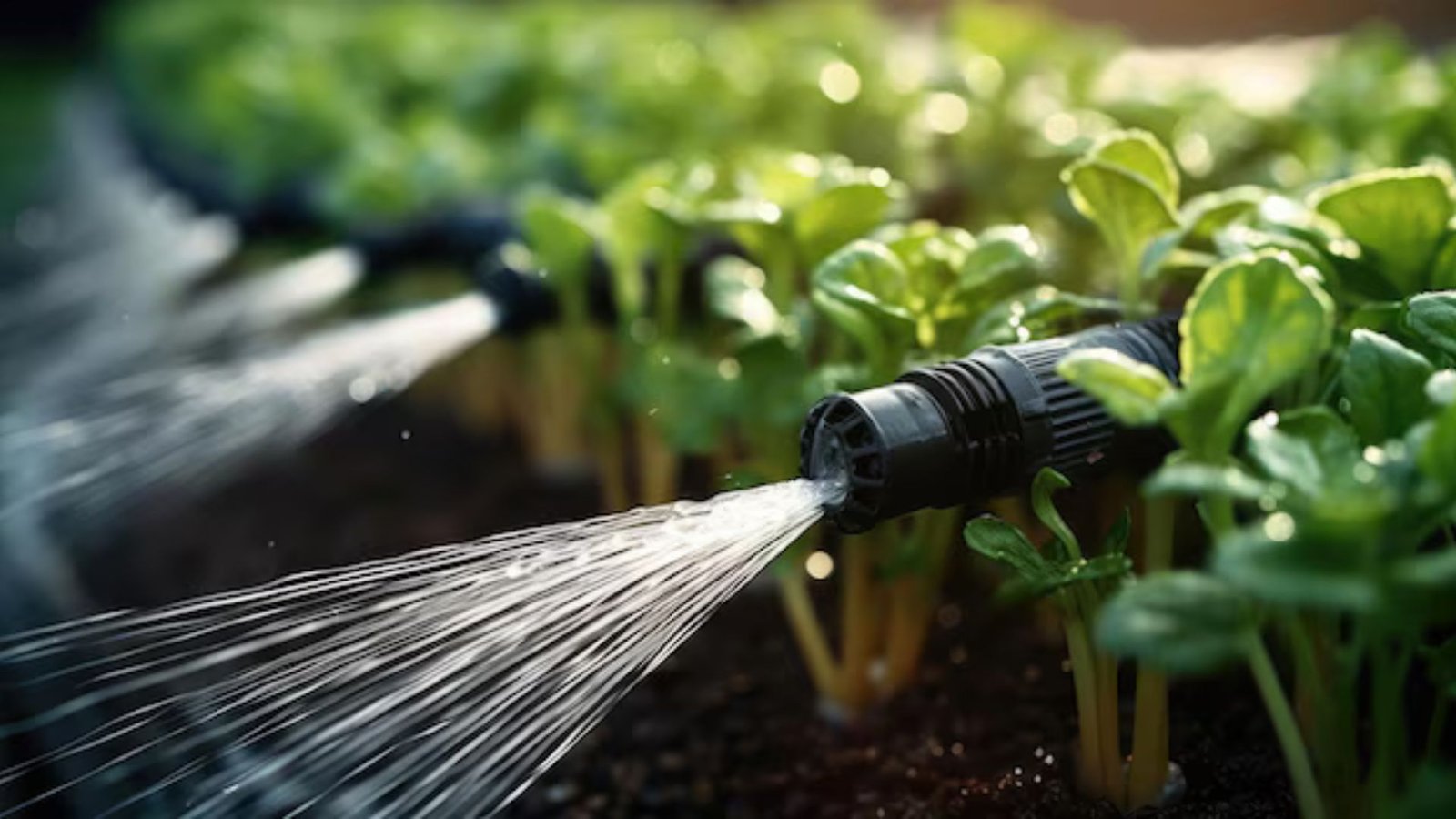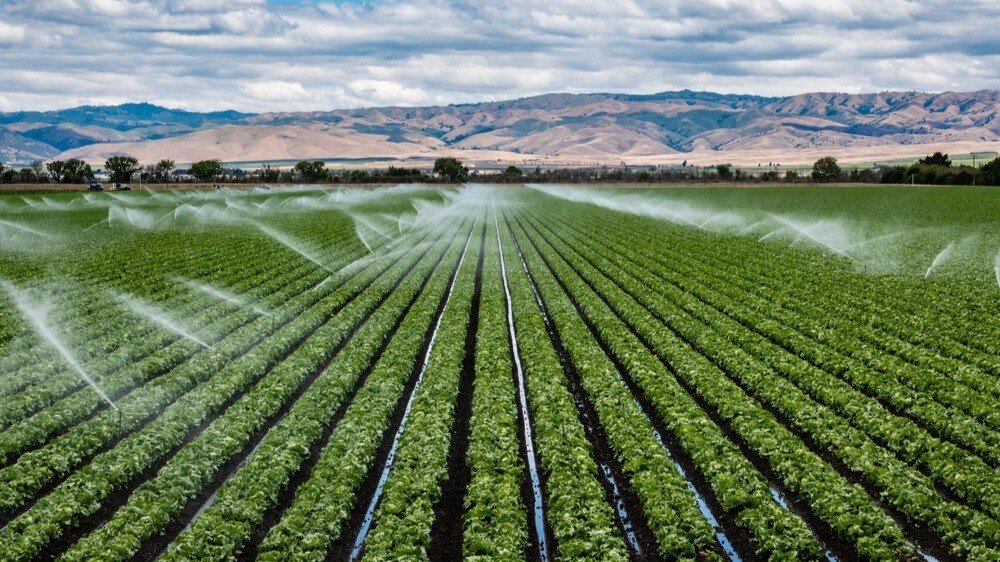Efficient irrigation is a cornerstone of modern agriculture. With the growing challenges of water scarcity, climate change, and the increasing demand for food, it’s more important than ever to ensure that crops get the right amount of water at the right time. Efficient irrigation design not only conserves water but also enhances crop yields, supports sustainable farming, and helps protect the environment.
In this article, we’ll explore some key irrigation design strategies that lead to better crops, helping farmers optimize water use and increase productivity.

1. Drip Irrigation: Precision Watering for Maximum Efficiency
Drip irrigation is one of the most efficient irrigation methods available today. Unlike traditional flood or sprinkler systems, drip irrigation delivers water directly to the root zone of plants. Water is supplied in small amounts through a network of tubes, pipes, and emitters, ensuring that each plant receives only the water it needs.
This targeted watering technique minimizes water waste and reduces evaporation, which is especially beneficial in areas with limited water resources. By improving water efficiency, drip irrigation allows crops to grow healthier, leading to higher yields. It also reduces weed growth, as water is only applied where it’s needed, further improving crop performance.
2. Sprinkler Irrigation: Covering Large Areas Efficiently
While drip irrigation is perfect for row crops or high-value plants, sprinkler irrigation is ideal for covering larger areas of crops, such as fields or orchards. Modern sprinkler systems are designed to be highly efficient, using less water and applying it more evenly over a large area.
Efficient sprinkler systems are adjustable and can be programmed to account for weather conditions, ensuring that water is applied only when necessary. By using sprinklers, farmers can ensure uniform water distribution, leading to more consistent crop growth and improved yields.
3. Soil Moisture Monitoring for Smart Irrigation Decisions
One of the most effective ways to improve irrigation efficiency is by monitoring soil moisture levels. Soil moisture sensors help farmers determine the exact amount of water needed for crops, preventing over-irrigation or underwatering. These sensors track the moisture content in the soil and automatically trigger irrigation when levels fall below a certain threshold.
By using soil moisture sensors, farmers can avoid wasting water and ensure that crops receive consistent moisture, which is crucial for their growth. This system also helps farmers save money on water costs and reduce the environmental impact of excessive irrigation.
4. Water-Efficient Irrigation Layouts
The layout of an irrigation system plays a key role in water efficiency. Well-planned layouts ensure that water is evenly distributed across the field, reducing waste and maximizing coverage. For instance, in drip irrigation systems, ensuring that drip lines are spaced correctly and placed at the right depth ensures that water is delivered efficiently to plant roots.
For larger fields, sprinkler systems should be positioned in such a way that they avoid overlaps or dry spots, ensuring that every part of the field receives adequate water. Additionally, considering factors like terrain and slope is essential to avoid water runoff and to ensure that irrigation is as efficient as possible.
5. Rainwater Harvesting: Using Nature’s Water for Irrigation
Rainwater harvesting is an innovative way to supplement irrigation systems and conserve water. By collecting and storing rainwater from rooftops, gutters, or other surfaces, farmers can use it to irrigate crops during dry periods. This reduces the dependence on external water sources such as rivers or groundwater, especially in regions with unpredictable rainfall.
Rainwater harvesting systems can be easily integrated into existing irrigation designs. With proper storage tanks or reservoirs, farmers can store large quantities of rainwater and use it to irrigate crops when rainfall is scarce. This helps conserve water and reduces irrigation costs, ensuring better crop production without draining local water resources.
6. Efficient Water Application Timing
Timing is a critical factor in efficient irrigation. Applying water during the right time of day, when temperatures are lower, reduces water loss through evaporation. The best times for irrigation are early in the morning or late in the evening when the sun is not at its peak.
By scheduling irrigation for optimal times, farmers can maximize water absorption by plants. Additionally, monitoring weather conditions and adjusting irrigation schedules based on forecasts can help prevent over-watering during rainy days, further enhancing water efficiency.
7. Use of Mulch to Retain Soil Moisture
Mulching is an effective method to conserve moisture in the soil. By covering the soil with organic materials such as straw, leaves, or grass clippings, farmers can reduce water evaporation, which is particularly helpful in hot or dry climates. Mulching also improves soil structure, preventing erosion and promoting better root growth.
In combination with efficient irrigation systems, mulching can reduce the need for frequent watering, and conserving water while promoting healthy crops. It also helps maintain consistent soil temperature, ensuring that crops grow in optimal conditions.
8. Recycling Water for Sustainable Farming
In areas where water resources are limited, recycling water for irrigation is a sustainable practice. Recycled water, such as treated wastewater or runoff from irrigation, can be reused for crop irrigation, reducing the demand for freshwater sources.
Water recycling systems can be designed to filter and treat wastewater, making it safe for agricultural use. This method not only conserves water but also reduces the environmental impact of wastewater disposal. By integrating water recycling with existing irrigation systems, farmers can create a more sustainable farming operation.
9. Crop Selection for Better Water Use Efficiency
Choosing the right crops for a specific climate and soil type is an important factor in improving irrigation efficiency. Some crops are more drought-tolerant and require less water than others. For instance, crops like barley, millet, and sorghum are more resistant to dry conditions and can grow with less irrigation.
Farmers can optimize their irrigation systems by selecting crops that match the local climate and soil characteristics. This helps reduce the overall water demand and allows for better water management. Additionally, crop rotation practices can ensure that soil health remains intact and that water use is efficient throughout the year.
Conclusion
Efficient irrigation design is essential for growing better crops while conserving water. By implementing methods like drip irrigation, using soil moisture sensors, and scheduling irrigation at the right times, farmers can optimize water use and improve crop yields. Incorporating rainwater harvesting, mulching, and water recycling can further enhance irrigation efficiency and promote sustainable farming.
With the growing challenges of water scarcity and climate change, adopting these efficient irrigation practices is more important than ever. Farmers who embrace these techniques will not only save water but also boost their crop production, ensuring long-term agricultural success and environmental sustainability.




